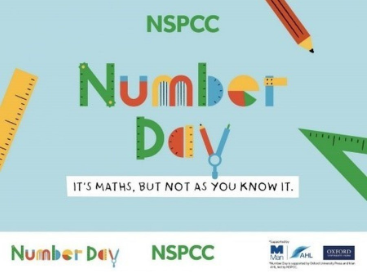Key Features of our Mathematics Curriculum
At Whinmoor St Paul’s our children learn important concepts and can make connections within mathematics. They develop a range of skills in using and applying mathematics. They are able to work independently and cooperatively and take the initiative in solving problems. Children think for themselves and are willing to try when faced with challenges. They love to learn from mistakes and false starts.
When investigating mathematically, most of our children are able to reason, generalise and make sense of solutions. They are generally fluent in performing written and mental calculations and mathematical techniques. They use mathematical language and symbols accurately in their work and in discussing their work with others.
Most importantly children at WSP enjoy the subject and develop a lifelong love of mathematics!
Important Documents
NSPCC Number Day
Each year Whinmoor St Paul’s takes part in a maths week focused around the NSPCC Number Day. The week consists of exciting number scavenger hunts, maths artwork, parent workshops where their children get to teach them some maths they have been learning in their classes, finishing off on Friday with our Number day where the children are invited into school to showcase their favourite mathematical symbol or number. This coming year this week will be the week beginning Monday 29th January 2024.

Long Term Plans for Maths at Whinmoor St Paul’s
EYFS
Year 1
Year 2
Year 3
Year 4
Year 5
Year 6
Times Tables
Secure and confident knowledge of times tables is vital to children’s success in Maths. Being able to do times tables is really important as it makes lots of other bits of maths easier. If you knew your times tables, imagine how easy you’d find most multiplication problems you come across! They are the building blocks of Maths and with multiplications understood then this leads to doors in many other areas of Maths becoming unlocked!
Here are some ways which memorising times tables can benefit your child:
- Knowing their times tables will give your child confidence in their ability in Maths. Our aim is for all children to be able to mentally recall their times tables at pace, moving away from counting on their fingers as they become more confident, as this confidence will help them solve a range of tasks at primary school and ease their transition through Primary School years and then into High School.
- If a child is confident with their times table skills, then this can reduce the cognitive load when learning a new method. An example of this is when learning the long multiplication method; if a child is already confident with their times tables then they can solely focus on the new skills with the method, e.g. where to carry numbers, when a place value holder is needed, estimating and checking that their answer is correct. This will not only help to ensure that their calculations are accurate, but speed up the process of learning a new method and also boost their confidence as they see that they have.
- Times tables help your child to grasp other mathematical concepts, such as fractions, division, ratio and percentages to name a few. Children who do not know their times tables will not be able to access more complex procedures, this is vitally important when your child reaches Year 6 for their SATs papers.
Learn your times tables by singing them! Check out these two links.
Times Tables Songs for kids
Percy Parker
How can we help continue the love of Mathematics at home?
Mathematics is a life long skill that is important every child and adult can understand. Many people may believe that they ” Can’t do maths.” however with exciting opportunites to see maths in a new light, every child can love and succeed in maths, below we have highlighted some ideas for you to complete at home that are easy and will support your child’s learning. Why not have a go and let us know how you get on- why not tweet us your mathematical activities.
At home
- Cooking: measure ingredients and set the timer together.
- Find the same amount of different items to help your child understand what numbers mean. For example, find 3 spoons, 3 hats or 3 socks.
- Put items in order. You could do this by weight, height or size. Ask your child to help you organise items around the house.
- Solve problems. Work out “how many altogether” and “how many more”. Ask your child questions such as: “We have 3 red apples and 2 green apples, so how many apples do we have altogether?”
Out and about
- Go on a shape hunt at the park or while you’re out and about. How many circles, squares, rectangles or triangles can your child find? Try getting your child to look for patterns.
- Look for numbers on doors, buses, cars, signs, at the shops – anywhere! Remember to talk about what the numbers mean when you see them.
- Count things. For example – how many lampposts are on our street? How many houses have a red door? How many dogs can you count in a day?
- Talk about time. How long does it take to walk to the shop, or to school?
Games to play
- What’s the time Mr Wolf?
- Hide and Seek
- Hula Hoops
- Skipping
Creating patterns
- Make patterns with coloured pencils, paint or playdough.
- Play with lego- can you make a pattern, does this shape fit on this shape?
- Get the children to guess how many lego pieces are in the tub.
Useful Links
